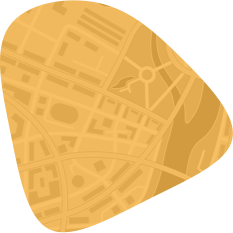What Are Common Hip Injuries?
Experienced New York orthopedic hip surgeons explain what you need to know
Dealing with a serious hip injury? Not sure exactly what type of injury you have or what to do now? Our experienced, New York orthopedic hip surgeons at Island Musculoskeletal Care (IMC Bone Doc) want to help you. Our doctors have more than 100 years of combined medical experience. As a result, we’re familiar with a wide range of hip injuries and how to properly diagnose them.
Don’t underestimate the severity or seriousness of your hip injury. Make sure you have one of our board-certified, fellowship-trained surgeons examine you and diagnose exactly what’s wrong. You may need to undergo a hip injury medical procedure, including surgery. Or perhaps we’ll recommend another treatment program based your specific medical condition.
Discover what our New York hip surgeons can do for you. Contact us and schedule an appointment. Many of our doctors at IMC Bone Doc have immediate appointments available – including the same day – at one of our seven offices conveniently located in greater New York City and Long Island. Best of all, we will do everything we can to schedule all your treatments at the same office location.
Don’t delay. Contact us today. You can make an appointment online or by calling us. Our medical practice is in network and accepted by most major insurance providers. In addition, our staff has extensive experience dealing with insurance companies, including ones that handle workers’ compensation claims for hip injuries sustained at work.
What type of hip injury do you have?
Want to learn more about some of the most serious and common hip injuries? Read more about different kinds of hip injuries below. Always remember to discuss the details of your hip injury or illness with a knowledgeable, experienced hip surgeon. No two hip injuries are ever exactly alike. That’s why we never take anything for granted and will thoroughly examine you in order to give you an accurate diagnosis.
- What is snapping hip?
- What is hip pain?
- What are muscle strains?
- What is hip bursitis?
- What is femoroacetabular impingement?
- What is avascular necrosis?
- What is a hip fracture?
- What is a hip dislocation?
- What is a pelvis fracture?
- What is a gluteus medius tear?
- What is a hip labral tear?
- What are chondral lesions or injuries?
- What is hip instability?
- What are loose bodies?
- What are hip groin disorders?
- What is a hip distraction?
- What is a subtrochanteric hip fracture?
- What are hip abductor tears?
- What is hip synovitis?
- What is an irritable hip?
- What is hip tendonitis?
- What are hip pointers?
- What is developmental dysplasia?
- What is Legg-Calve-Perthes-Disease (LCPD)?
- What is Slipped Capital Femoral Epiphysis?
This type of hip injury involves a snapping sensation in the hip. Often due to activities which require frequent bending – including sports and dancing – snapping hip syndrome can sometimes be associated with other hip injuries, including hip bursitis.
Hip pain is a very important warning sign that something could be wrong with you hip. That’s why it’s important to pay attention to your body and have a doctor diagnose you if you experience severe hip pain or prolonged hip pain without relief.
Muscle strains involving the hip cover a wide range of injuries in which the muscles in the hip region are pulled. The pulled muscles are partially or completely torn. These injuries often occur due to overuse, overstretching or a direct blow to the muscle.
This painful hip condition occurs when the bursa (fluid-filled sacs in the joints) in the hips become inflamed, resulting in a painful hip condition caused by friction between bones and soft tissue in the hip.
What is femoroacetabular impingement?
Femoroacetabular impingement (FAI) refers to a medical condition in which bony irregularities in the hip joint cause hip pain and reduced range of motion due to excessive friction.
Also known as osteonecrosis, avascular necrosis in the hip involves bone death due to lack of blood supply in the bone. A hip fracture is a common cause of avascular necrosis.
A fracture is a break in the bone. When a hip fracture occurs, the break can be a partial hip fracture (only part of the bone is broken) or a complete hip fracture (the entire bone is completely broken). Hip fractures can be very painful and often require hip surgery.
This medical term refers to the painful condition caused by the ball and socket joint in the hip being moved out of place. As a result, the socket-shaped piece of bone known as the acetabulum no longer holds the ball-shaped part of the thigh bone (femur).
This condition involves the fracture (breaking) of the pelvis bone, which is one of the larger bones in the hip region. A pelvis fracture can cause extensive nerve damage as well as damage to blood vessels and internal organs in the pelvis area. Treatment for pelvis fractures can vary widely, depending on the severity of the hip injury.
What is a gluteus medius tear?
One of the larger muscles in the hip area, the gluteus medius plays a critical role when walking or moving the lower part of the body. That’s why a gluteus medius tear (often due to straining the muscle) can be so painful and disruptive.
The soft cartilage tissue located near the outside of the hip socket is known as the labrum. Sometimes, this muscle can tear, especially due to sports injuries or repetitive movements which require heavy lifting.
What is a chondral lesion or injury?
The center portion of damaged cartilage is referred to as the chondral. As the cartilage deteriorates, the chondral can tear or fracture. This is known as a chondral lesion. As a result, the cartilage covering the hip joint is damaged and can cause severe hip pain for someone with a chondral injury.
Hip stability is vital when it comes to being able to walk or move normally. That’s why a hip injury can be so debilitating. Suddenly, you might not be able to maintain your balance or walk normally due to a hip injury or illness which causes you to be unstable.
Loose bodies is a technical term used to describe loose cartilage or bone matter in a person’s joints. When there are loose bodes in the hip joint, walking, standing up or performing other normal tasks can be painful and difficult to do due to swelling of the hip joint and hip pain.
Injuries to the groin area of the hip occur for many different reasons. Often, sports injuries are a common cause of hip groin injuries and disorders. However, overuse or muscles abnormalities can also be a common cause of hip groin disorders.
Hip distraction is a technical term used to describe a medical procedure used to correct certain hip injuries while keeping the surrounding hip muscles in place. In particular, hip distraction primarily involves moving the hip back into its normal position often due to hip dislocation. Hip distraction is considered a conservative surgical procedure, but an overnight hospital stay is common after undergoing hip distraction surgery.
What is a subtrochanteric hip fracture?
A subtrochanteric hip fracture is a break in the hip bone which occurs between the upper part of the thigh bone (femur) and hip. These hip injuries are classified Type I, Type II or Type III based on where the subtrochanteric hip fracture occurs.
Hip abductors are the muscles located in the buttocks near the hip. These muscles include the gluteus maximus, gluteus minimus and gluteus medius. When these muscles are torn or injured, it can be very difficult to walk or even sit due to a hip abductor tear.
Inflammation of the synovial tissue around the hip joint is known as hip synovitis. This painful hip injury often occurs among young boys and can cause sudden hip pain. Non-surgical treatments are often used to treat and alleviate the pain commonly associated with hip synovitis.
Also known as acute transient synovitis, irritable hip is a medical term used to describe a common hip injury among young boys often due to a hip disorder. Children with irritable hip often have a difficult time walking and walk with a limp.
When the tendons in the hip become inflamed or damaged, this painful hip injury is known as hip tendonitis. Overuse or straining the hip muscles are common causes of hip tendonitis, which can often be treated with non-surgical hip injury treatments.
Hip pointers is a medical term used to describe a bruise or injury to the bones located in the hip joint. Hip pointer injuries are especially common sports injuries, but hip pointers can affect anyone, particularly if they receive a direct blow to the hip.
What is developmental dysplasia?
Developmental problems in the hip joint in young children and infants are often due to developmental dysplasia of the hip, which is often referred to by the acronym DDH. Children with DDH often have difficulty walking because their thigh bone (femur) completely or partially slips out of the hip socket.
What is Legg-Calve-Perthes-Disease (LCPD)?
Bone death in the hip due to temporarily reduced blood supply among young children (particularly boys) is sometimes due to a genetic hip disease known as Legg-Calve-Perthes-Disease (LCPD). Eventually, the dead bone matter is often replaced with new bone cells. Medical treatment and surgery may be necessary to promote new bone growth due to LCPD.
What is Slipped Capital Femoral Epiphysis?
Sometimes referred to by its acronym SCEF, slipped capital femoral epiphysis is a relatively rare hip disorder which involves the ball joint in the femur (thigh bone) slipping backwards. Due to SCEF, people with this hip injury often have trouble walking or walk with a limp. SCEF normally affects teenagers who experience a sudden growth spurt.






















